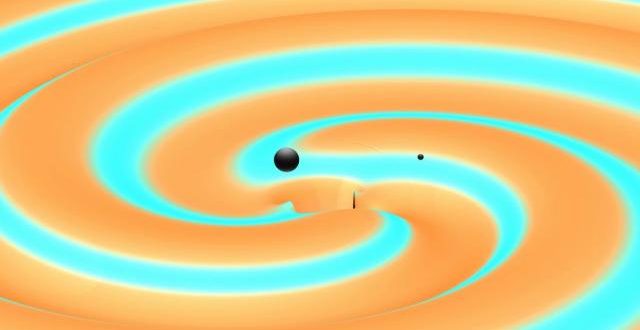Researchers from the LIGO and Virgo collaborations announced today the observation of gravitational waves from a set of merging black holes.
The international team spotted the phenomenon on Boxing Day but has only now made the news public.
As with the earlier detection which stunned the world of physics in September 2015, the source was found to be two colliding and merging black holes unleashing titanic forces.
The event, some 1.4 billion light years away, caused a quantity of energy roughly equivalent to the mass of the Sun to be converted into gravitational waves.
After travelling an unimaginable distance across space, the waves were “captured” by the twin LIGO (Laser Interferometer Gravitational-wave Observatory) detectors located in Livingston, Louisiana, and Hanford, Washington, US.
This event heralds the true beginning of gravitational wave astronomy and the opening of a new window on the universe.
The different masses and observable spins that we witnessed in the Boxing Day event show that we’re starting to collect vital information about the population of black holes that exist in the universe.
Future gravitational wave observations will allow us to understand how black holes form from the death of massive stars, and test whether they are really as predicted by Einstein’s theory.”
– DR STEPHEN FAIRHURST, CARDIFF UNIVERSITY
Gravitational waves are predicted in Einstein’s Theory Of General Relativity, which shows how gravity arises from mass curving space and time.
They are ripples in space-time that propagate as waves. Anything in their path, from humans to whole planets, is made to stretch and compress slightly as the fabric of space-time is distorted.
Each of the LIGO detectors, consisting of an incredibly sensitive system of mirrors and lasers, is also made to “wobble”. But the effect is really tiny. The amount of movement is thousands of times smaller than the width of the nucleus of an atom.
Researchers hope gravitational waves will offer a completely different view of the universe, allowing them to study events that might be hidden from traditional optical and radio telescopes.
Agencies/Canadajournal
 Canada Journal – News of the World Articles and videos to bring you the biggest Canadian news stories from across the country every day
Canada Journal – News of the World Articles and videos to bring you the biggest Canadian news stories from across the country every day



